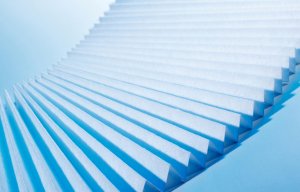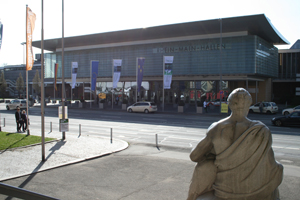
Sandler at Filtech 2022
Opinion


Adrian Wilson reports from Wiesbaden As was reflected at Filtech 2011, which took place in Wiesbaden, Germany, from March 22-24, the need for purer air and cleaner water are just two reasons why the filtration industry has excellent prospects for future growth. A demand for finer degrees of separation in industry – from hydraulic oils to semi-conductor wash water – can be added to the list, as can the need for better hot exhaust gas filtration, including diesel exhausts, and for higher ene

30th March 2011
Adrian Wilson
|
Wiesbaden
As was reflected at Filtech 2011, which took place in Wiesbaden, Germany, from March 22-24, the need for purer air and cleaner water are just two reasons why the filtration industry has excellent prospects for future growth.
A demand for finer degrees of separation in industry – from hydraulic oils to semi-conductor wash water – can be added to the list, as can the need for better hot exhaust gas filtration, including diesel exhausts, and for higher energy efficiencies in all separation operations.
In coming years, filtration is expected to play a vital role in addressing the problem of diminishing oil and gas availability, the probable return of nuclear power, and the equally likely growth in the use of hydrogen as an energy carrier.
These challenges offer a wealth of opportunity to the filtration industry which incorporates a wide range of materials as filter media – from increasingly sophisticated membranes and nonwovens through to ceramics and metals and even including coarse, porous materials such as sand.
Filtech started in the 1960s at the Olympia in London, later moving to Holland before settling in Germany – reflecting the country’s European dominance in the automotive field and many other industrial areas. Wiesbaden is a short distance from Frankfurt and its Rhein-Main centre is an excellent choice for an exhibition of this size.
This year a very comprehensive conference featured over 180 papers, while an extra hall was added for exhibitors.
 Nanofibrous membranes
Nanofibrous membranesTaking centre stage in Hall 1, was Hollingsworth and Vose, one of the key players in nonwoven-based filter media, with manufacturing sites in the Americas, Europe and Asia.
The company’s NanoWave range of nanofibrous membranes have a range of uses, and at Filtech, the company outlined how, for example, they are achieving massive savings for a manufacturer of business and civilian jets.
At its US dry-paint spray booth facilities, this company collects overspray paint in bag filters that periodically need to be replaced to ensure a consistent flow across the paint bay. Obligated by law to comply with proper procedures for the disposal of hazardous waste, the company was making eight filter set changes annually at a cost of $11,000 each.
Annual savings as a result of replacement with NanoWave-based bags have been put at $45,000, as a result of the media’s dust-holding capacity, which is said to be double that of both synthetic and glass fibre alternatives.
Nanofibre layers are the latest general progression for nonwoven-based filter media, allowing greatly extended surface area which allows for maximum efficiency with low resistance, while further increasing particle-loading area.
As a consequence, most leading companies supplying nonwoven-based media are employing them, but Germany’s Irema has gone a stage further, in introducing a patented single-step process for producing meltblown nonwoven webs with fully integrated nanofibres.
The company’s 100% polypropylene minipleat filter has recently been tested and certified to a number of standards which prove its performance to be on par with glassfibre.
“The demand for our patented new filter media, manufactured on the latest generation of our proprietary lines, is growing continuously, particularly in the ventilation and air conditioning markets,” said the company’s Anja-Michen Mueller at Filtech.
Such new developments are only likely to intensify in the coming years – the filter media market now has an overall annual value of over US$20 billion.
![]()

Business intelligence for the fibre, textiles and apparel industries: technologies, innovations, markets, investments, trade policy, sourcing, strategy...
Find out more